Midweek Review
Tamil politics is taking a new direction- The Pottuvil to Polikandi pada yatra
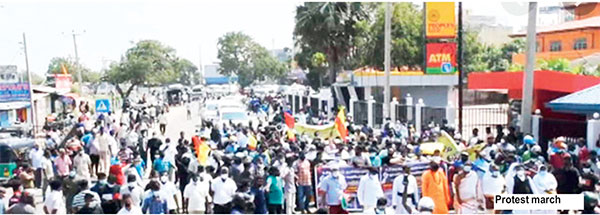
by Dr Nirmala Chandrahasan
For some time now the Tamil political parties and the Tamil polity have been looking to the international community to settle their problems. Thus much reliance has been placed on the Human Rights Council’s resolutions and the Geneva processes. Although this is one avenue it is not the only one. The international processes are also dependant on geo politics and the national interests of the states that are represented in these organizations and hence one cannot always expect a favourable outcome. On the other hand, when the issues facing the Tamil speaking people are taken up by the people themselves and their representatives at the ground level it could have a better outcome, as the majority community and the country at large are made aware of the grievances and issues which are agitating the Tamil speaking part of the country. This requires that the print and electronic media give adequate coverage to these events so that the Sinhala and English reading public are made aware . Unfortunately this is not the case. The news coverage and dissemination of news within the country, is as divided as the communities themselves , and no effort is made to bridge the gap. To give an example I did not see any coverage of the Pottuvil to Polikandy pada yatra in the Sinhala or English news media, although it had unprecedented numbers of participants and evoked great enthusiasm in the northern and eastern provinces. It is in the interest of all communities if the Country’s problems are solved within it and not through external agencies. The need to turn to foreign agencies arises when a community feels they have no recourse to justice or solution to their grievances within their own political system. The recently held yatra or march from Pottuvil in the eastern province to Polikandy in the Jaffna district , from 3rd February to 7th February 2021, was a new approach which included the active participation of the Tamil speaking people of the northern and eastern provinces, ie Tamils and Muslims. Peaceful protest is a part of the democratic process ,and must be encouraged rather than stamped upon as it allows for the peoples’ voice to be heard.
The peaceful Ahimsa Yatra was conducted by the Civil society groups in the Northern and Eastern Provinces to highlight some of the current issues faced by the Tamil speaking people of Lanka. They included the Rs. 1000,wage demand of the Upcountry Tamil plantation workers who have long been denied what other workers in the country have been enjoying; the burial rights of the Muslim Community and the forced cremation of their Covid dead; and the land grabs and attack on the cultural and religious heritage of the villages and farming communities of the eastern and northern provinces, through the actions of the Archaeological Department and the recently constituted Task Force, together with the Mahaweli Authority and Wildlife Department. In the present regime age old Hindu Temples in the villages are under threat of being taken over or destroyed on the grounds that there is evidence of ruined sites of Buddhist Vihares and Stupas in or around them. Archaeological surveys are being conducted and boundary lines and fences put up taking over the lands of the farmers and cattle grazing grounds. Sinhala Buddhist settlers are to be settled in these enclaves. These actions have caused the Tamil speaking people of these areas to fear that they will be dispossed from their own traditional areas in which their ancestors have lived for centuries.
The composition of the Presidential Task force for archaeological sites in the East, is illustrative of the statement in the recently published report of the High Commissioner for human Rights Michelle Bachelet where she says ..”Tamil and Muslim minorities are being increasingly marginalised and excluded from the national vision and government policy.” The Presidential Task Force is mainly comprised of military personnel and Buddhist clergy with a scattering of Archaeologists. When we consider that in a multi ethnic province where the Tamil speaking people predominate there is not a single Tamil or Muslim Archaeologist or linguist or any person at all to represent these communities, the High Commissioner’s words ring true. It must also be pointed out that a large number of stone inscriptions appertaining to these ruined structures are in ancient Tamil script, and form part of the Tamil Buddhist/Hindu heritage of the Tamil people of Sri Lanka who to cite the words of the Indo- Sri Lanka Peace Accord of july 1987, have been the historical inhabitants of the Northern and Eastern provinces. Already this task force is in the field claiming ownership of the sites of ancient Tamil Buddhist Vihares and Stupas , in many instances accompanied by police or army personnel. It is alleged that inscriptions in the ancient Tamil script and stone tablets containing such writings are being destroyed. Tamil farmers see their lands and cattle grazing common grounds being taken over. Statues of the Buddha are being installed at different sites accompanied by army personnel and Buddhist monks. The Buddha is venerated by Hindus and even worshipped as the avatar of the God Vishnu ,but the manner and purpose behind such actions are causing disaffection. Sinhalese settlers are being brought in. Here again what is at issue is not their ethnicity , but the purpose for which and manner in which they are being brought in by the State agencies. Hence this is now the pressure point.
The recent Yatra was inter alia (there were altogether ten issues) to voice the concerns of the people and show support to the villagers and farmers of the region who flocked to join the protest in great numbers. It must not be forgotten that it was the ancestors of the Tamil community who built the ruined Vihares and Stupas ( alleged according to some members of the Task force to be amounting to 2000 in number, which are now awaiting excavation,) at a period when they were largely Buddhists, as too was South India inclusive of Tamil Nadu in the early part of the Christian era until about the 8-9th centuries when there was a Hindu revival. Even in the event of these ruins being unearthed it has to be kept in mind that many of these structures were bequeathed by the great Chola rulers from Tamil Nadu, the Emperors Raja Raja Chola and Rajendra Chola. The Cholas made Polonnaruwa their capital city and ruled Sri Lanka for almost a century from 993- 1070 AD .They were the patrons of both religions and built Hindu Temples and Buddhist Vihares and supported the maintenance of them as well, by grants of lands and villages.
In this connection I reproduce a news item from the Hindu newspaper in India dated October 19th 2020, captioned ‘ Efforts on to bring back Chola Royal Charter, Preserved in the Netherlands it was a Sasana issued to a Buddhist Vihara’. “The Charter has two sections one in Sanskrit and another in Tamil , and the 21 copper plates are held together by a massive bronze ring bearing the regal seal of Rajendra Chola. It proclaims that 26 villages bordering Anaimangalam were donated for a Buddhist Vihara in Nagapattnam, Tamil Nadu”. While this Charter is evidence of the patronage to Buddhism in Tamil Nadu even after the Hindu revival in South India , there is evidence of Chola patronage to Buddhist religious institutions in Sri lanka too, as in the Vikkirama Calemekan Perum Palli in the Eastern province also known as the Velgam Vihare or Natanar Kovil by the present day Tamils. The Tamil inscriptions at the shrine record donations made to the shrine and dated in the reign of the Chola king Raja raja Chola. The late Dr Paranavithane, the well known Sri Lankan archaeologist has described it as an ancient Buddhist shrine of the Tamil people. In the Chakesadhatuvansa an ancient manuscript from Burma, which records the relics of the Buddha, the Tamils are mentioned as ” sea faring merchants who built a Stupa over the hair relic of the Buddha in a land which they visited for the purpose of trade”. Interestingly the Digavappi Stupa in the Amparai district is said to enclose a hair relic of the Buddha. The Tamil merchants sailing to Indonesia from Kaveripoompattinam the Port in Tamil Nadu during Chola times , are said to have first sailed southward towards what is now Akkaraipattu town in the Amparai district, as it was believed that there was a current which took the ships across the Indian ocean speedily from this point to Indonesia. During the tsunami in 2004 this theory was proved correct as the tsunami stuck around the Akkaraipattu region first, coming directly from its source off the seas in Sumatra with great force. In an earlier article of mine i have referred to the donations made to Buddhist shrines by Tamil merchant trading communities as evidenced in the various Tamil inscriptions in different parts of Sri lanka. see “. Archaeological sites in the East and the Presidential Task force.” published in the island newspaper of 12th june 2020. Also Article by Dr D.Dayalan, Archaeological Survey of india “Role of Tamil Traders in promoting Buddhism”.
In fact there is sufficient evidence to prove that most if not all the archaeological sites of Buddhist Vihares and Stupas in the East and the North are Tamil Buddhist sites and hence the custodianship of these sites should be with the Tamil communities/institutions of those localities, or at least with the participation of the same. The Tamil leadership should also take up the matter of Tamil and Muslim representation in the Task force and also the appointment of linguists who could read and decipher the ancient Tamil inscriptions found at these sites, as well as persons versed in the ancient Pali and Sinhalese scripts , as these structures largely represent the composite Hindu /Buddhist cultural heritage of both the Sinhalese and Tamil communities. Efforts should also be made to protect these ancient inscriptions from destruction.
As I have indicated above the attacks on their cultural and religious heritage as well as their lands are causing the Tamil speaking people of these provinces to fear that they will become a minority in the areas which they have traditionally occupied. The fact that the Provincial Council system is under threat by certain elements which are attempting to prevent the Provincial Council elections being held and calling for the abolishment of the Councils is fuelling this fear. The Province as the unit of devolution gives the Tamil speaking people some devolved powers in areas where they constitute the majority. It should be kept in mind that the provincial councils are underwritten by the Indo –Sri Lanka Accord of 1987 and furthermore the Treaty specifically denotes the Northern and Eastern Provinces as being areas of ‘ Historical habitation of the Tamil speaking people’. A U.N panel of experts in a recent Conference has taken the view that cultural heritage is a human rights issue, as the destruction of cultural heritage harms a range of human rights. Hence the threat to the Tamil Hindu /Buddhist heritage, can be regarded as impinging on the human rights of the Tamil people of these provinces. The 1954 Hague Convention protects cultural property in times of war. The Statue of the International Criminal Court (ICC) makes , destruction of cultural heritage a war crime. In the 2016 judgement of the ICC namely Prosecutor v Al Mahdi, a Muslim jihadist was convicted for attacks against religious and historical monuments in Timbucktu, in the African state of Mali. Hence we can see that cultural identity is coming to be recognized as an important component of ethnic identity ,and any attempts to stamp it out or undermine it is tantamount to ethnic discrimination, and even akin to ethnic cleansing.
With respect to the analogy with Palestine I would like to refer to an article by Dr.Dayan Jayatilleke published in The Island on 28th May 2020 titled ‘Is it the end of Tamil political history.’ He states “the political prospects of the Tamil people are at the dimmest lowest and most challenging that I can remember.”He sees the problems the Tamils face in Sri Lanka as akin to what the Palestinians face in Israel “in that there is an ultra hawkish administration which has decidedly turned its back on the earlier consensus on the nature of the problem and the contours of the solution and is moving swiftly and unilaterally to shape a final geopolitical outcome of a zero sum character”. Further on he refers to the ‘far right bucket list’ which is to interalia “eliminate the problem root and branch and structurally lock down minority assertiveness ensuring an unassailable systemic hegemony of the Sinhalese Buddhist’. He cites the appointment of the Archaeological Task Force in the East as part of this project. There is no evidence that this policy is endorsed by the Sinhalese people ,and for that matter by the majority of the Parliamentarians, even those of the governing party, and that the Prime Minister and the Cabinet members would endorse it. However it could be the policy of a small coterie holding such views who make the policy decisions. The High Commissioner for Human Rights Michelle Bachelet too makes mention of this when she refers to “the present trajectory” in her upcoming report for the Council sessions in Geneva in February March this year. She says ……..” the High Commission is deeply concerned by the trends emerging over the past year which represent clear early warning signs of a detiorating human rights situation and a significantly heightened risk of future violations and calls for preventive action”…..
The civil war was fought already a decade and more ago , but the present threat to the habitat of the people and their religious / cultural heritage is a presently continuing one. In the context of this existential threat it is important that it be communicated to the majority community so as to gain their sympathy and support. Greater publicity to these matters in the English and Sinhala press should be pursued so that with the support of all the communities these issues can be resolved amicably, according to the Buddhist principles of right conduct and compassion.
It should be kept in mind that the guardian Deities of Sri Lanka are Hindu Gods and the entire country has a Buddhist /Hindu heritage. I note that the Ahimsa Yatra stopped on its way from Pottuvil to Polikandi to obtain the Blessings of Mary maadha at the sylvan Shrine of Madhu. In this shrine especially during the church festival large numbers of Sinhalese from the entire western coast of Sri Lanka and Tamils from the eastern and northern coasts and the Vanni, converge to venerate the Madhu Maadha, and the whole Church resonates with the sweet sounds of the Rosary being recited in Sinhala and Tamil. This seems like a confirmation that the country belongs equally to the Tamil and Sinhala speaking people and to all the religious groups. In the interests of all the communities in the island it is necessary that the print and electronic media play their role in giving due publicity to the grievances of and protests taking place in the Tamil speaking part of the country rather than black out this news, as in the case of the Pottuvil to Polikandi protest march while the foreign media takes it up. Peaceful protests if driven underground can take the form of violent and incendiary protests. Ultimately Sinhalese, Tamils, Muslims and Burghers are children of Mother Lanka /Ilankai, and well intentioned members of the government and other political parties and the people of all communities must come together in an endeavour to reconcile and defuse the issues and grievances of the Tamil speaking people outlined above.
- News Advertiesment
See Kapruka’s top selling online shopping categories such as Toys, Grocery, Flowers, Birthday Cakes, Fruits, Chocolates, Clothing and Electronics. Also see Kapruka’s unique online services such as Money Remittence,News, Courier/Delivery, Food Delivery and over 700 top brands. Also get products from Amazon & Ebay via Kapruka Gloabal Shop into Sri Lanka.
Midweek Review
‘Professor of English Language Teaching’
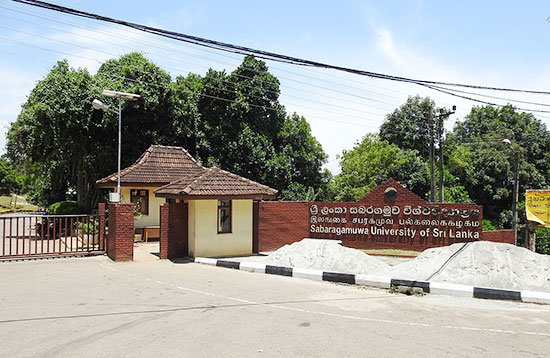
It is a pleasure to be here today, when the University resumes postgraduate work in English and Education which we first embarked on over 20 years ago. The presence of a Professor on English Language Teaching from Kelaniya makes clear that the concept has now been mainstreamed, which is a cause for great satisfaction.
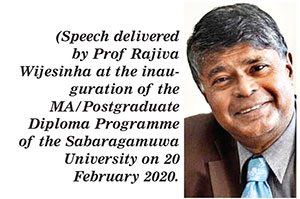 Twenty years ago, this was not the case. Our initiative was looked at askance, as indeed was the initiative which Prof. Arjuna Aluwihare engaged in as UGC Chairman to make degrees in English more widely available. Those were the days in which the three established Departments of English in the University system, at Peradeniya and Kelaniya and Colombo, were unbelievably conservative. Their contempt for his efforts made him turn to Sri Jayewardenepura, which did not even have a Department of English then and only offered it as one amongst three subjects for a General Degree.
Twenty years ago, this was not the case. Our initiative was looked at askance, as indeed was the initiative which Prof. Arjuna Aluwihare engaged in as UGC Chairman to make degrees in English more widely available. Those were the days in which the three established Departments of English in the University system, at Peradeniya and Kelaniya and Colombo, were unbelievably conservative. Their contempt for his efforts made him turn to Sri Jayewardenepura, which did not even have a Department of English then and only offered it as one amongst three subjects for a General Degree.
Ironically, the most dogmatic defence of this exclusivity came from Colombo, where the pioneer in English teaching had been Prof. Chitra Wickramasuriya, whose expertise was, in fact, in English teaching. But her successor, when I tried to suggest reforms, told me proudly that their graduates could go on to do postgraduate degrees at Cambridge. I suppose that, for generations brought up on idolization of E. F. C. Ludowyke, that was the acme of intellectual achievement.
I should note that the sort of idealization of Ludowyke, the then academic establishment engaged in was unfair to a very broadminded man. It was the Kelaniya establishment that claimed that he ‘maintained high standards, but was rarefied and Eurocentric and had an inhibiting effect on creative writing’. This was quite preposterous coming from someone who removed all Sri Lankan and other post-colonial writing from an Advanced Level English syllabus. That syllabus, I should mention, began with Jacobean poetry about the cherry-cheeked charms of Englishwomen. And such a characterization of Ludowyke totally ignored his roots in Sri Lanka, his work in drama which helped Sarachchandra so much, and his writing including ‘Those Long Afternoons’, which I am delighted that a former Sabaragamuwa student, C K Jayanetti, hopes to resurrect.
I have gone at some length into the situation in the nineties because I notice that your syllabus includes in the very first semester study of ‘Paradigms in Sri Lankan English Education’. This is an excellent idea, something which we did not have in our long-ago syllabus. But that was perhaps understandable since there was little to study then except a history of increasing exclusivity, and a betrayal of the excuse for getting the additional funding those English Departments received. They claimed to be developing teachers of English for the nation; complete nonsense, since those who were knowledgeable about cherries ripening in a face were not likely to move to rural areas in Sri Lanka to teach English. It was left to the products of Aluwihare’s initiative to undertake that task.
Another absurdity of that period, which seems so far away now, was resistance to training for teaching within the university system. When I restarted English medium education in the state system in Sri Lanka, in 2001, and realized what an uphill struggle it was to find competent teachers, I wrote to all the universities asking that they introduce modules in teacher training. I met condign refusal from all except, I should note with continuing gratitude, from the University of Sri Jayewardenepura, where Paru Nagasunderam introduced it for the external degree. When I started that degree, I had taken a leaf out of Kelaniya’s book and, in addition to English Literature and English Language, taught as two separate subjects given the language development needs of students, made the third subject Classics. But in time I realized that was not at all useful. Thankfully, that left a hole which ELT filled admirably at the turn of the century.
The title of your keynote speaker today, Professor of English Language Teaching, is clear evidence of how far we have come from those distant days, and how thankful we should be that a new generation of practical academics such as her and Dinali Fernando at Kelaniya, Chitra Jayatilleke and Madhubhashini Ratnayake at USJP and the lively lot at the Postgraduate Institute of English at the Open University are now making the running. I hope Sabaragamuwa under its current team will once again take its former place at the forefront of innovation.
To get back to your curriculum, I have been asked to teach for the paper on Advanced Reading and Writing in English. I worried about this at first since it is a very long time since I have taught, and I feel the old energy and enthusiasm are rapidly fading. But having seen the care with which the syllabus has been designed, I thought I should try to revive my flagging capabilities.
However, I have suggested that the university prescribe a textbook for this course since I think it is essential, if the rounded reading prescribed is to be done, that students should have ready access to a range of material. One of the reasons I began while at the British Council an intensive programme of publications was that students did not read round their texts. If a novel was prescribed, they read that novel and nothing more. If particular poems were prescribed, they read those poems and nothing more. This was especially damaging in the latter case since the more one read of any poet the more one understood what he was expressing.
Though given the short notice I could not prepare anything, I remembered a series of school textbooks I had been asked to prepare about 15 years ago by International Book House for what were termed international schools offering the local syllabus in the English medium. Obviously, the appalling textbooks produced by the Ministry of Education in those days for the rather primitive English syllabus were unsuitable for students with more advanced English. So, I put together more sophisticated readers which proved popular. I was heartened too by a very positive review of these by Dinali Fernando, now at Kelaniya, whose approach to students has always been both sympathetic and practical.
I hope then that, in addition to the texts from the book that I will discuss, students will read other texts in the book. In addition to poetry and fiction the book has texts on politics and history and law and international relations, about which one would hope postgraduate students would want some basic understanding.
Similarly, I do hope whoever teaches about Paradigms in English Education will prescribe a textbook so that students will understand more about what has been going on. Unfortunately, there has been little published about this but at least some students will I think benefit from my book on English and Education: In Search of Equity and Excellence? which Godage & Bros brought out in 2016. And then there was Lakmahal Justified: Taking English to the People, which came out in 2018, though that covers other topics too and only particular chapters will be relevant.
The former book is bulky but I believe it is entertaining as well. So, to conclude I will quote from it, to show what should not be done in Education and English. For instance, it is heartening that you are concerned with ‘social integration, co-existence and intercultural harmony’ and that you want to encourage ‘sensitivity towards different cultural and linguistic identities’. But for heaven’s sake do not do it as the NIE did several years ago in exaggerating differences. In those dark days, they produced textbooks which declared that ‘Muslims are better known as heavy eaters and have introduced many tasty dishes to the country. Watalappam and Buriani are some of these dishes. A distinguished feature of the Muslims is that they sit on the floor and eat food from a single plate to show their brotherhood. They eat string hoppers and hoppers for breakfast. They have rice and curry for lunch and dinner.’ The Sinhalese have ‘three hearty meals a day’ and ‘The ladies wear the saree with a difference and it is called the Kandyan saree’. Conversely, the Tamils ‘who live mainly in the northern and eastern provinces … speak the Tamil language with a heavy accent’ and ‘are a close-knit group with a heavy cultural background’’.
And for heaven’s sake do not train teachers by telling them that ‘Still the traditional ‘Transmission’ and the ‘Transaction’ roles are prevalent in the classroom. Due to the adverse standard of the school leavers, it has become necessary to develop the learning-teaching process. In the ‘Transmission’ role, the student is considered as someone who does not know anything and the teacher transmits knowledge to him or her. This inhibits the development of the student.
In the ‘Transaction’ role, the dialogue that the teacher starts with the students is the initial stage of this (whatever this might be). Thereafter, from the teacher to the class and from the class to the teacher, ideas flow and interaction between student-student too starts afterwards and turns into a dialogue. From known to unknown, simple to complex are initiated and for this to happen, the teacher starts questioning.’
And while avoiding such tedious jargon, please make sure their command of the language is better than to produce sentences such as these, or what was seen in an English text, again thankfully several years ago:
Read the story …
Hello! We are going to the zoo. “Do you like to join us” asked Sylvia. “Sorry, I can’t I’m going to the library now. Anyway, have a nice time” bye.
So Syliva went to the zoo with her parents. At the entrance her father bought tickets. First, they went to see the monkeys
She looked at a monkey. It made a funny face and started swinging Sylvia shouted: “He is swinging look now it is hanging from its tail its marvellous”
“Monkey usually do that’
I do hope your students will not hang from their tails as these monkeys do.
Midweek Review
Little known composers of classical super-hits
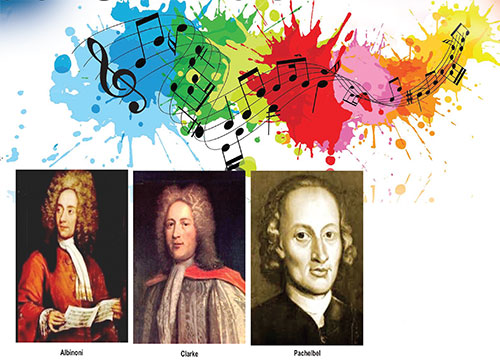
By Satyajith Andradi
Quite understandably, the world of classical music is dominated by the brand images of great composers. It is their compositions that we very often hear. Further, it is their life histories that we get to know. In fact, loads of information associated with great names starting with Beethoven, Bach and Mozart has become second nature to classical music aficionados. The classical music industry, comprising impresarios, music publishers, record companies, broadcasters, critics, and scholars, not to mention composers and performers, is largely responsible for this. However, it so happens that classical music lovers are from time to time pleasantly struck by the irresistible charm and beauty of classical pieces, the origins of which are little known, if not through and through obscure. Intriguingly, most of these musical gems happen to be classical super – hits. This article attempts to present some of these famous pieces and their little-known composers.
Pachelbel’s Canon in D
The highly popular piece known as Pachelbel’s Canon in D constitutes the first part of Johann Pachelbel’s ‘Canon and Gigue in D major for three violins and basso continuo’. The second part of the work, namely the gigue, is rarely performed. Pachelbel was a German organist and composer. He was born in Nuremburg in 1653, and was held in high esteem during his life time. He held many important musical posts including that of organist of the famed St Stephen’s Cathedral in Vienna. He was the teacher of Bach’s elder brother Johann Christoph. Bach held Pachelbel in high regard, and used his compositions as models during his formative years as a composer. Pachelbel died in Nuremburg in 1706.
Pachelbel’s Canon in D is an intricate piece of contrapuntal music. The melodic phrases played by one voice are strictly imitated by the other voices. Whilst the basso continuo constitutes a basso ostinato, the other three voices subject the original tune to tasteful variation. Although the canon was written for three violins and continuo, its immense popularity has resulted in the adoption of the piece to numerous other combinations of instruments. The music is intensely soothing and uplifting. Understandingly, it is widely played at joyous functions such as weddings.
Jeremiah Clarke’s Trumpet Voluntary
The hugely popular piece known as ‘Jeremiah Clarke’s Trumpet Voluntary’ appeared originally as ‘ The Prince of Denmark’s March’ in Jeremiah Clarke’s book ‘ Choice lessons for the Harpsichord and Spinet’, which was published in 1700 ( Michael Kennedy; Oxford Dictionary of Music ). Sometimes, it has also been erroneously attributed to England’s greatest composer Henry Purcell (1659 – 1695 ) and called ‘Purcell’s Trumpet Voluntary (Percy A. Scholes ; Oxford Companion to Music). This brilliant composition is often played at joyous occasions such as weddings and graduation ceremonies. Needless to say, it is a piece of processional music, par excellence. As its name suggests, it is probably best suited for solo trumpet and organ. However, it is often played for different combinations of instruments, with or without solo trumpet. It was composed by the English composer and organist Jeremiah Clarke.
Jeremiah Clarke was born in London in 1670. He was, like his elder contemporary Pachelbel, a musician of great repute during his time, and held important musical posts. He was the organist of London’s St. Paul’s Cathedral and the composer of the Theatre Royal. He died in London in 1707 due to self – inflicted gun – shot injuries, supposedly resulting from a failed love affair.
Albinoni’s Adagio
The full title of the hugely famous piece known as ‘Albinoni’s Adagio’ is ‘Adagio for organ and strings in G minor’. However, due to its enormous popularity, the piece has been arranged for numerous combinations of instruments. It is also rendered as an organ solo. The composition, which epitomizes pathos, is structured as a chaconne with a brooding bass, which reminds of the inevitability and ever presence of death. Nonetheless, there is no trace of despondency in this ethereal music. On the contrary, its intense euphony transcends the feeling of death and calms the soul. The composition has been attributed to the Italian composer Tomaso Albinoni (1671 – 1750), who was a contemporary of Bach and Handel. However, the authorship of the work is shrouded in mystery. Michael Kennedy notes: “The popular Adagio for organ and strings in G minor owes very little to Albinoni, having been constructed from a MS fragment by the twentieth century Italian musicologist Remo Giazotto, whose copyright it is” (Michael Kennedy; Oxford Dictionary of Music).
Boccherini’s Minuet
The classical super-hit known as ‘Boccherini’s Minuet’ is quite different from ‘Albinoni’s Adagio’. It is a short piece of absolutely delightful music. It was composed by the Italian cellist and composer Luigi Boccherini. It belongs to his string quintet in E major, Op. 13, No. 5. However, due to its immense popularity, the minuet is performed on different combinations of instruments.
Boccherini was born in Lucca in 1743. He was a contemporary of Haydn and Mozart, and an elder contemporary of Beethoven. He was a prolific composer. His music shows considerable affinity to that of Haydn. He lived in Madrid for a considerable part of his life, and was attached to the royal court of Spain as a chamber composer. Boccherini died in poverty in Madrid in 1805.
Like numerous other souls, I have found immense joy by listening to popular classical pieces like Pachelbel’s Canon in D, Jeremiah Clarke’s Trumpet Voluntary, Albinoni’s Adagio and Boccherini’s Minuet. They have often helped me to unwind and get over the stresses of daily life. Intriguingly, such music has also made me wonder how our world would have been if the likes of Bach, Handel, Haydn, Mozart, Beethoven, and Schubert had never lived. Surely, the world would have been immeasurably poorer without them. However, in all probability, we would have still had Pachelbel’s Canon in D, Jeremiah Clarke’s Trumpet Voluntary, Albinoni’s Adagio, and Boccherini’s Minuet, to cheer us up and uplift our spirits.
Midweek Review
The Tax Payer and the Tough
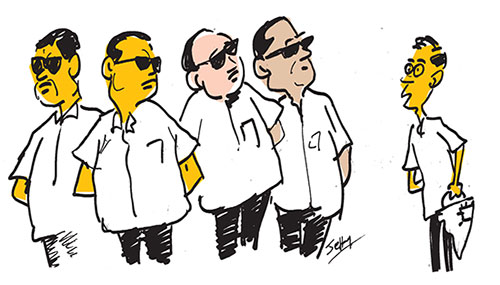
By Lynn Ockersz
The tax owed by him to Caesar,
Leaves our retiree aghast…
How is he to foot this bill,
With the few rupees,
He has scraped together over the months,
In a shrinking savings account,
While the fires in his crumbling hearth,
Come to a sputtering halt?
But in the suave villa next door,
Stands a hulk in shiny black and white,
Over a Member of the August House,
Keeping an eagle eye,
Lest the Rep of great renown,
Be besieged by petitioners,
Crying out for respite,
From worries in a hand-to-mouth life,
But this thought our retiree horrifies:
Aren’t his hard-earned rupees,
Merely fattening Caesar and his cohorts?









